Themed collection Quantum computing and quantum information storage: Celebrating the 2022 Nobel Prize in Physics

Oxide
nanowires for spintronics: materials and devices
Nanowire-based spintronics presents new opportunities and challenges in understanding the intimate couplings between charge, spin, orbital and lattice.
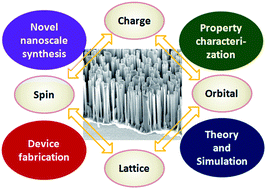
Nanoscale, 2012,4, 1529-1540
https://doi.org/10.1039/C2NR11767C
Quantum machine learning for chemistry and physics
Quantum variants of machine learning algorithms are discussed with emphasis on methodology, learning techniques and applications in broad and distinct domains of chemical physics.

Chem. Soc. Rev., 2022,51, 6475-6573
https://doi.org/10.1039/D2CS00203E
Quantum algorithms for electronic structures: basis sets and boundary conditions
Quantum algorithms for electronic structure calculations are reviewed with a special focus on basis sets and boundary conditions.

Chem. Soc. Rev., 2022,51, 3263-3279
https://doi.org/10.1039/D1CS01184G
Quantum control of reactions and collisions at ultralow temperatures
At nearly absolute zero temperature, molecular reactions and collisions are completely governed by quantum mechanics and can be exquisitely controlled by external fields.

Chem. Soc. Rev., 2022,51, 1685-1701
https://doi.org/10.1039/D1CS01040A
A quantum computing view on unitary coupled cluster theory
This review presents a comprehensive overview of the Unitary Coupled Cluster (UCC) ansatz and related ansätze which are used to solve the electronic structure problem on quantum computers.

Chem. Soc. Rev., 2022,51, 1659-1684
https://doi.org/10.1039/D1CS00932J
Vanadyl phthalocyanines on graphene/SiC(0001): toward a hybrid architecture for molecular spin qubits
VOPc maintains an “oxygen-up” orientation and its spin on graphene is S = 1/2: this is an interesting system for qubit applications.

Nanoscale Horiz., 2019,4, 1202-1210
https://doi.org/10.1039/C9NH00023B
Formation of long single quantum dots in high quality InSb nanowires grown by molecular beam epitaxy
Single electron transport is demonstrated in high-quality MBE-grown InSb nanowire single quantum dots with a dot length up to ∼700 nm.

Nanoscale, 2015,7, 14822-14828
https://doi.org/10.1039/C5NR04273A
Realization of a quantum Hamiltonian Boolean logic gate on the Si(001):H surface
The design and construction of the first prototypical QHC (Quantum Hamiltonian Computing) atomic scale Boolean logic gate is reported using scanning tunnelling microscope (STM) tip-induced atom manipulation on an Si(001):H surface.
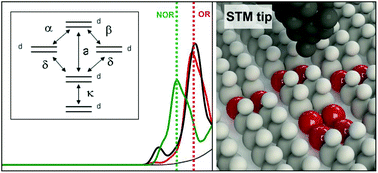
Nanoscale, 2015,7, 12325-12330
https://doi.org/10.1039/C5NR01912E
Controlled coherent dynamics of [VO(TPP)], a prototype molecular nuclear qudit with an electronic ancilla
By a combined theoretical and broadband nuclear magnetic resonance study, we show that [VOTPP] is a coupled electronic qubit-nuclear qudit system suitable to implement qudit-based quantum error correction and quantum simulation algorithms.
![Graphical abstract: Controlled coherent dynamics of [VO(TPP)], a prototype molecular nuclear qudit with an electronic ancilla](/en/Image/Get?imageInfo.ImageType=GA&imageInfo.ImageIdentifier.ManuscriptID=D1SC01358K&imageInfo.ImageIdentifier.Year=2021)
Chem. Sci., 2021,12, 12046-12055
https://doi.org/10.1039/D1SC01358K
Analog quantum simulation of chemical dynamics
Dynamics governing ultrafast chemical reactions can be efficiently simulated using analog quantum simulators composed of a coupled system of qudits and bosonic modes.
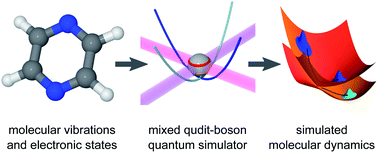
Chem. Sci., 2021,12, 9794-9805
https://doi.org/10.1039/D1SC02142G
Quantum algorithm for alchemical optimization in material design
‘Alchemical’ quantum algorithm for the simultaneous optimisation of chemical composition and electronic structure for material design. By exploiting quantum mechanical principles this approach will boost drug discovery in the near future.

Chem. Sci., 2021,12, 4345-4352
https://doi.org/10.1039/D0SC05718E
A feasible approach for automatically differentiable unitary coupled-cluster on quantum computers
We develop computationally affordable and encoding independent gradient evaluation procedures for unitary coupled-cluster type operators, applicable on quantum computers.

Chem. Sci., 2021,12, 3497-3508
https://doi.org/10.1039/D0SC06627C
Quantum entanglement control of electron–phonon systems by light irradiation
The coherent control dynamics of interacting electron–phonon and qubit–spin systems is numerically studied. The time-evolution of the quantum many-body states is revealed from a viewpoint of quantum entanglement.

Faraday Discuss., 2022,237, 108-124
https://doi.org/10.1039/D2FD00007E
A large-gap quantum spin Hall state in exfoliated Na3Bi-like two-dimensional materials
A class of large-gap 2D TIs (K2NaBi and Rb2NaBi monolayers) by exfoliating Na3Bi-like three-dimensional Dirac semimetals.

J. Mater. Chem. C, 2022,10, 11329-11337
https://doi.org/10.1039/D2TC01755E
Bias-dependent hole transport through a multi-channel silicon nanowire transistor with single-acceptor-induced quantum dots
We demonstrated that a lightly boron-doped multi-channel silicon nanowire transistor could exhibit the gate-modulated transition of bias-dependent zero-dimensional and one-dimensional hole transport characteristics.

Nanoscale, 2022,14, 11018-11027
https://doi.org/10.1039/D2NR02250H
Metamagnetic transition and a loss of magnetic hysteresis caused by electron trapping in monolayers of single-molecule magnet Tb2@C79N
Whereas bulk Tb2@C79N is a single-molecule magnet with broad hysteresis, its monolayers on different substrates show the prevalence of a non-magnetic ground state near zero magnetic field and a metamagnetic transition with the field increase.
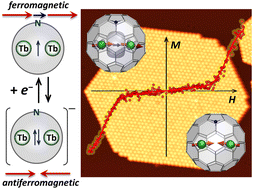
Nanoscale, 2022,14, 9877-9892
https://doi.org/10.1039/D1NR08475E
A theoretical study on laser cooling feasibility of XH (X = As, Sb and Bi): effects of intersystem crossings and spin–orbit couplings
The present calculations reveal the effects of intersystem crossings and spin–orbit couplings on laser cooling of the group VA hydrides, with an empirical law of “crossing point shifting down” down a group in the periodic table generalized.
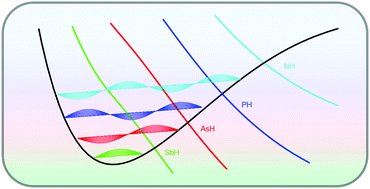
Phys. Chem. Chem. Phys., 2022,24, 10114-10123
https://doi.org/10.1039/D2CP00387B
Shannon and von Neumann entropies of multi-qubit Schrödinger's cat states
Cat state entropies for n = 2, 5, 10, and 15 qubits, as functions of qubit accuracies a and b.

Phys. Chem. Chem. Phys., 2022,24, 7666-7681
https://doi.org/10.1039/D1CP05255A
Full-dimensional Schrödinger wavefunction calculations using tensors and quantum computers: the Cartesian component-separated approach
Traditional quantum chemistry is based on separability by particle. Here, we explore a radically different approach, based on separability by Cartesian component.

Phys. Chem. Chem. Phys., 2022,24, 4437-4454
https://doi.org/10.1039/D1CP02036F
An organic synaptic transistor with integration of memory and neuromorphic computing
The transistor exhibits a controllable adjustment of synaptic behavior while maintaining each memory state, which describes the ability of integration memory with neuromorphic computing.

J. Mater. Chem. C, 2021,9, 9972-9981
https://doi.org/10.1039/D1TC02112E
Local spin and open quantum systems: clarifying misconceptions, unifying approaches
The theory of open quantum systems (OQSs) is applied to partition the squared spin operator into fragment (local spin) and interfragment (spin-coupling) contributions in a molecular system.

Phys. Chem. Chem. Phys., 2021,23, 8375-8392
https://doi.org/10.1039/D0CP05946C
Bell inequalities for entangled qubits: quantitative tests of quantum character and nonlocality on quantum computers
Linear combination S of spin-projection correlation functions in the Clauser–Horne–Shimony–Holt inequality, from runs on an IBM quantum computer, after error mitigation. Values of S > 2 rule out local hidden-variable theories.
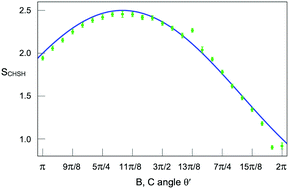
Phys. Chem. Chem. Phys., 2021,23, 6370-6387
https://doi.org/10.1039/D0CP05444E
Magnetic anisotropy in YbIII complex candidates for molecular qubits: a theoretical analysis
The magnetic properties of mononuclear YbIII complexes have been explored by using multiconfigurational CASPT2/RASSI calculations.

Phys. Chem. Chem. Phys., 2021,23, 1976-1983
https://doi.org/10.1039/D0CP05422D
Entanglement via rotational blockade of MgF molecules in a magic potential
Rotations of MgF molecules can be entangled via strong dipole–dipole interactions when trapped in optical tweezers with a magic polarization angle.

Phys. Chem. Chem. Phys., 2021,23, 1215-1220
https://doi.org/10.1039/D0CP04042H
Exploring the behaviors of electrode-driven Si quantum dot systems: from charge control to qubit operations
Quantum logic operations and electron spin controls in a Si double quantum dot platform is studied with a multi-scale modeling approach that can open the pathway to explore engineering details for Si-based designs of robust quantum logic gates.

Nanoscale, 2021,13, 332-339
https://doi.org/10.1039/D0NR05070A
Surface chemical trapping of optical cycling centers
Quantum information processors are proposed, based on optical cycling centers trapped attached to a surface.

Phys. Chem. Chem. Phys., 2021,23, 211-218
https://doi.org/10.1039/D0CP04525J
Magnetic properties and quench dynamics of two interacting ultracold molecules in a trap
The interplay of external fields and internal structure of two interacting ultracold trapped molecules produces rich magnetization diagrams and nonequilibrium dynamics.
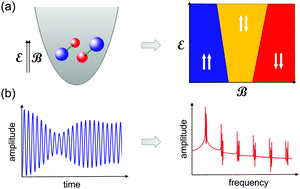
Phys. Chem. Chem. Phys., 2020,22, 28140-28153
https://doi.org/10.1039/D0CP05542E
Coherent manipulation of the internal state of ultracold 87Rb133Cs molecules with multiple microwave fields
We explore coherent multi-photon processes in 87Rb133Cs molecules using 3-level lambda and ladder configurations of rotational and hyperfine states, and discuss their relevance to future applications in quantum computation and quantum simulation.

Phys. Chem. Chem. Phys., 2020,22, 27529-27538
https://doi.org/10.1039/D0CP04651E
Electromagnetic control of spin ordered Mn3 qubits: a density functional study
As expected from experiment, the [Mn3O(O2CMe)dpd3/2]2 dimer exists in an S = 12 ferromagnetic state. However the monomeric building blocks regardless of termination, are found in antiferromagnetic state with unusual local moments (S = 1).

Phys. Chem. Chem. Phys., 2020,22, 27547-27553
https://doi.org/10.1039/D0CP04455E
Vacancies in graphene: an application of adiabatic quantum optimization
Interactions that dominate carbon-vacancy interchange were modeled on a quantum annealer. The method exploits the ground state and the excited states to extract the possible arrangements of vacancies in graphene and their relative formation energies.

Phys. Chem. Chem. Phys., 2020,22, 27332-27337
https://doi.org/10.1039/D0CP04037A
Solving complex eigenvalue problems on a quantum annealer with applications to quantum scattering resonances
The Quantum Annealer Eigensolver (QAE) is applied to the calculation of quantum scattering resonances and their lifetimes on a D-Wave quantum annealer.

Phys. Chem. Chem. Phys., 2020,22, 26136-26144
https://doi.org/10.1039/D0CP04272B
Spin-momentum entanglement in a Bose–Einstein condensate
Mechanisms including two types of Raman laser coupling (Ω1 & Ω2) and rf field coupling (Ωrf) are applied to drive transitions between different hyperfine spin states. We investigated the entanglement between the spin and momentum degrees of freedom.

Phys. Chem. Chem. Phys., 2020,22, 25669-25674
https://doi.org/10.1039/D0CP03945D
Quantum algorithm for simulating molecular vibrational excitations
We introduce a quantum algorithm for simulating molecular vibrational excitations during vibronic transitions. The algorithm is used to simulate vibrational excitations of pyrrole and butane during photochemical and mechanochemical excitations.

Phys. Chem. Chem. Phys., 2020,22, 25528-25537
https://doi.org/10.1039/D0CP03593A
First-principles studies of strongly correlated states in defect spin qubits in diamond
Using a recently developed quantum embedding theory, we present first principles calculations of strongly correlated states of spin defects in diamond.
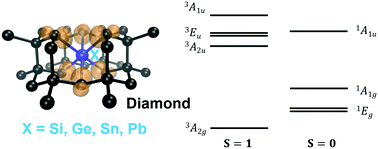
Phys. Chem. Chem. Phys., 2020,22, 25522-25527
https://doi.org/10.1039/D0CP04585C
Dipole–phonon quantum logic with alkaline-earth monoxide and monosulfide cations
We outline a path towards universal quantum computation using the dipole–phonon interaction of polar molecular ions in an ion trap.

Phys. Chem. Chem. Phys., 2020,22, 24964-24973
https://doi.org/10.1039/D0CP04574H
Quantum simulation of electronic structure with a transcorrelated Hamiltonian: improved accuracy with a smaller footprint on the quantum computer
Molecular quantum computing simulations are currently limited by the use of minimal Gaussian bases, a problem we overcome using a canonical transcorrelated Hamiltonian to accelerate basis convergence, with unitary coupled cluster as an example.
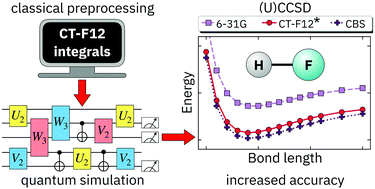
Phys. Chem. Chem. Phys., 2020,22, 24270-24281
https://doi.org/10.1039/D0CP04106H
Quantum computation of silicon electronic band structure
We present minimal depth circuits implementing the variational quantum eigensolver algorithm and successfully use it to compute the band structure of silicon on a quantum machine for the first time.

Phys. Chem. Chem. Phys., 2020,22, 21816-21822
https://doi.org/10.1039/D0CP04008H
The exploration of novel fluorescent copper–cysteamine nanosheets for sequential detection of Fe3+ and dopamine and fabrication of molecular logic circuits
Herein, newly emerged copper–cysteamine (Cu–Cy) nanosheets with red fluorescence and a good stability were explored as a new type of probe for Fe3+ and dopamine detection.

J. Mater. Chem. C, 2020,8, 12935-12942
https://doi.org/10.1039/D0TC02843F
In search of molecular ions for optical cycling: a difficult road
Optical cycling, a continuous photon scattering off atoms or molecules, is the key tool in quantum information science.
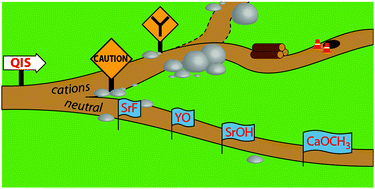
Phys. Chem. Chem. Phys., 2020,22, 17075-17090
https://doi.org/10.1039/D0CP02921A
Tunneling magnetoresistance and light modulation in Fe4N(La2/3Sr1/3MnO3)/C60/Fe4N single molecule magnetic tunnel junctions
Spin-dependent transport properties and light modulation of Fe4N/C60/Fe4N and LSMO/C60/Fe4N single molecule magnetic tunnel junctions.

J. Mater. Chem. C, 2020,8, 3137-3146
https://doi.org/10.1039/C9TC06379J
Generation of non-classical states of photons from a metal–dielectric interface: a novel architecture for quantum information processing
We show the possibility to generate photons in a certain class of non-classical states from a metal–dielectric interface using dipole emitters on the interface.

Nanoscale, 2020,12, 256-261
https://doi.org/10.1039/C9NR06529F
Resonance energy transfer and quantum entanglement mediated by epsilon-near-zero and other plasmonic waveguide systems
We present enhanced Förster resonance energy transfer and prolonged efficient quantum entanglement between optical qubits separated by long-range distances mediated by epsilon-near-zero plasmonic waveguides.

Nanoscale, 2019,11, 14635-14647
https://doi.org/10.1039/C9NR05083C
Optomagnetic plasmonic nanocircuits
Optomagnetic plasmonic nanocircuitry for directing and processing the readout of electron spins of nitrogen vacancy centres in nanodiamonds.

Nanoscale Adv., 2019,1, 3131-3138
https://doi.org/10.1039/C9NA00351G
Nanoassembly of quantum emitters in hexagonal boron nitride and gold nanospheres
The assembly of quantum nanophotonic systems with plasmonic resonators is important for fundamental studies of single photon sources as well as for on-chip information processing.
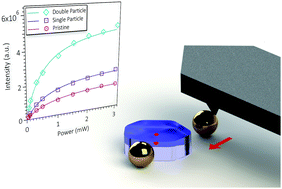
Nanoscale, 2018,10, 2267-2274
https://doi.org/10.1039/C7NR08249E
Controlling the plasmonic orbital angular momentum by combining the geometric and dynamic phases
The tunable orbit angular momentum (OAM) of surface plasmon polaritons (SPPs) is theoretically studied with appropriately designed metasurfaces.
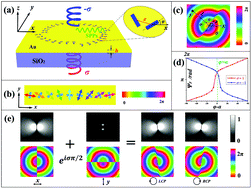
Nanoscale, 2017,9, 4944-4949
https://doi.org/10.1039/C7NR00124J
Orientation mapping of Rabi frequencies in a rare-earth molecular qudit
Utilizing the S = 7/2 4f spin and the D4 symmetry of a Gd(III) complex, we propose and demonstrate an eight-leveled rare-earth molecular qudit, which can be coherently manipulated between adjacent energy levels with precompiled pulse durations.
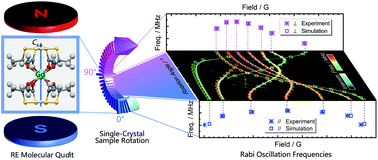
Inorg. Chem. Front., 2020,7, 3875-3881
https://doi.org/10.1039/D0QI00784F
About this collection
This cross-journal collection is dedicated to quantum computing and quantum information storage, in honour of the 2022 Nobel Prize in Physics. Quantum information science involves replacing the binary classical bit with a quantum bit (qubit) and promises to revolutionize the field of information technology. This collection showcases recent developments in quantum information storage and computing and includes work from both experimental and theoretical communities working on atomic, molecular, and optical aspects of emerging quantum information technology.